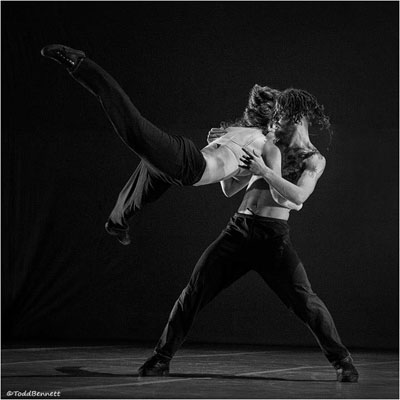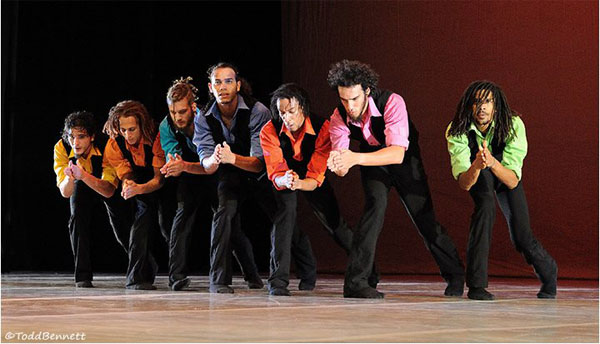Joel Suarez: Cuban Dancer in Prestigious German Company

Helson Hernandez
HAVANA TIMES — Joel Suarez, one of the few Cuban dancers who has managed to join a leading company in Europe, shares his experiences and views on the preparation that dancers currently go through in Cuba compared to dancers worldwide.
HT: Tell us about dance as a means of expression in your professional world?
Joel Suarez: After eight years of ballet study and four years working with the National Ballet of Cuba — in a world that unconsciously consumes all of you, given the dedication and effort required — I found myself involved in “contemporary dance.”
The professional part of my relationship with dance is of course very important, especially as a means of realizing ideas and movements. But what continues to amaze me, and what causes me to fall deeper in love with dance every day, are certain characteristics that one develops.
Capacity and physical freedom, the high levels of creativity that are required, perception, and working with energy and space are things the body learns how to use. They now define me as a human being off stage. I really think this is the immense power that dance provides us.
I’ve faced situations, dilemmas and rediscoveries that go far beyond the act of dancing. Within me it has created sensitivity, commitment and responsibility, especially to myself, to do and be what corresponds to my place in the universe.
HT: Danza Contemporanea de Cuba? Are you referring to that company?
JS: It’s a company with amazing dancers in great physical condition and tremendous abilities for executing dance moves. Generally, I think it has carried out its role well as a result of the perspectives, criteria and visions of its directors. However it’s very difficult, since the problems impacting Cuba as a larger nucleus also affect smaller nuclei.
In that company I had a family, I had friends, I had teachers and superlative experiences. I have to confess though that I was always interested in exploring the depths of other aesthetic avenues, removed somewhat from the extreme dependence on the capacity for physical potential and implementation.
HT: Sometimes they call you a “dancer,” but you aren’t satisfied with that designation. Is there some conflict with respect to this?
JS: Yes, this is very personal. My creative mind doesn’t think like a dancer. I think a creator should consider their discourse first and then make the most sincere and honest decisions with it. I think the opposite loses value and veracity. It’s logical that we need names, but I see art as one thing. I think of art as communication, which is immense and rich, while dancing is just a part of it all.
HT: It would be interesting to hear your views about how dancers are trained in Cuba.
JS: There’s a lot of ignorance on the part of the dancers concerning this issue. As much as it may seem, an injured dancer might be common, but it’s not normal. In the same way, there’s much ignorance of anatomy on the part of teachers. For example, though we’re instructed to work with all of the muscles in our legs, it’s only necessary that we work with our quadriceps.
Every muscle has a function and therefore a physiognomy. Each deserves more specific treatment. Our bodies often deceive us. We don’t use the muscles we really need and we over train others, which doesn’t lead to anything good. I don’t feel like I’m making my point, but these issues would be a perfect thesis for physicians. This topic is immense.
 The body has a stunning design. It’s capable of repairing itself in a matter of days if properly trained. By itself it can achieve any anatomically possible goal. Techniques condition the body, all of it. I don’t think a dancer should train daily or warm up using established techniques. Many of these are abusive and even harmful for a body, even for a body with supposed conditions for practicing them.
The body has a stunning design. It’s capable of repairing itself in a matter of days if properly trained. By itself it can achieve any anatomically possible goal. Techniques condition the body, all of it. I don’t think a dancer should train daily or warm up using established techniques. Many of these are abusive and even harmful for a body, even for a body with supposed conditions for practicing them.
As I see it, health comes first. Without one’s health you can forget dance, you can forget everything. Nonetheless, this formula isn’t yet clear to many people in the world. I think what are most important are warm-ups, and these must be neutral and respectful of the body. I see them more like maintenance than training. They keep your body flexible, capable, fit and healthy as well as clean and free of vices. I think workouts should fall more onto the choreographer, based on their discourse and what they want the performers to accomplish.
HT: What do you mean when you say you know what you want in dance but still haven’t seen it?
JS: In dance as a performer, I know what I want, but I haven’t seen it or I haven’t mastered it because I haven’t had many opportunities to do more “experimental” work, as some would say. I would say work that is born more from my interior as a human being, work that brings me closer to the receiver as opposed to appearing distant and as a stranger.
During my time in Danza Contemporanea de Cuba I was lucky to get closer to this type of work. Juan Kruz Diaz de Garaio Esnaola, George Cespedes, Osnel Delgado, Julio Cesar Iglesias, Andy Zontag are some of the people who directly helped me to decide my path as a performer in dance.
HT: Tell us about the prestigious German company “Sasha Waltz and Guests.”
JS: I’ve the great fortune of working with them now in their new production. It’s an interesting project and I’m really very happy with this opportunity. The challenge and the responsibilities are huge, but I’m going to thoroughly enjoy. I’m still in love with the work of the company from when they were in Havana.
I had the great experience of sharing a dance studio with them and workshops given by Juan Kruz, with live music by X Alfonzo. It all really marked me forever and helped me a lot to find myself as an artist. Plus, they were super concerned and occupied with the welfare of their members, a collective based on respect and camaraderie, with all of them creators.
HT: What concerns do you have about the artistic teaching of dance in today’s Cuba?
JS: The Cuban education system functions. The high level and potential of its dancers are proof of that. It’s a reality today that education should be more artistic. Maybe it has to do with the school-dance company relationship.
All Cuban schools use the same teaching method. To learn something different you have to leave Cuba, unless someone comes from abroad, mostly to the capital, or you leave the country, which is still impossible for many.
We must exploit our quality and accept our place as communicators rather than staying — comfortably indeed — in the simple place of executors. The current success of Cuban dance is due almost only to that. So we show ourselves to the world, and looking for that, foreign choreographers come to the country with work that is only ultra physical and pure execution. It’s an endless circle.
Cuban contemporary dance companies, for the most part, are focused on ultra physical work, therefore they need ultra-physical dancers. That’s how they work in schools, so we see many young artists and performers totally immersed in technicalities, only concerned with counts and motions, without any responsibility or respect for the art they’re doing. They don’t see it as art, they just see it as work, which it is as well, but the lucky ones are those who love their profession and can make a living in it.
And then there’s the other side, we’re selling artists. A lot of these young people who have graduated as professionals end up in places that only have value — in Cuba and for Cubans — in that they do a little better financially, performing on cabaret stages that have more to do with the black women and rum that’s sold to tourists, than the years of sweat and toil that we’ve gone through, us and our family, to develop ourselves in this art.
A key point is the need that exists in schools of really active creators, people capable of shaking the ground of those youth, capable of informing them, motivating them and promoting diversity over uniformity.
HT: What experiences have you had outside the dance context?
JS: I’ve had a few contacts with the theater, which for me were great. I’m very interested in tools and processes of creation in this environment. It seems more honest with our situation as human beings. From those places I’d like to arrive at movement.
HT: What about the health of the current development of dance in Cuba.
JS: To the extent that Cuban dancers have such a physical quality, the ambition of our projects should be higher. We can’t settle for dancing to show this and nothing else.
We must exploit our quality and accept our place as communicators rather than staying — comfortably indeed — in the simple place of executors. The current success of Cuban dance is due almost only to that. So we show ourselves to the world, and looking for that, foreign choreographers come to the country with work that is only ultra physical and pure execution. It’s an endless circle.
I want to explain that in itself there’s nothing wrong with this. Those are aesthetic criteria. The problem is that our choice has been crippled by the lack of options. They are few companies, and with real quality even less, in what you can experience with a greater range of work.
The lack of studio space, the economy, the treatment of interpreters as eternal students, the lack of information, Internet inaccessibility and the few creators are challenges for Cuban dance.
I believe — and this happens in all fields in the country — that we should look a little further forward instead of at past accomplishments, accepting that there are those who do this better and learn from them and contribute. We have incredible human material and stories to tell. Hell, we have plenty of them!





